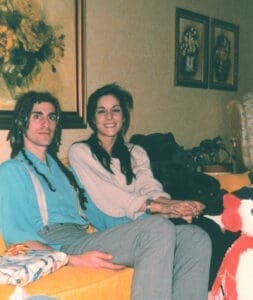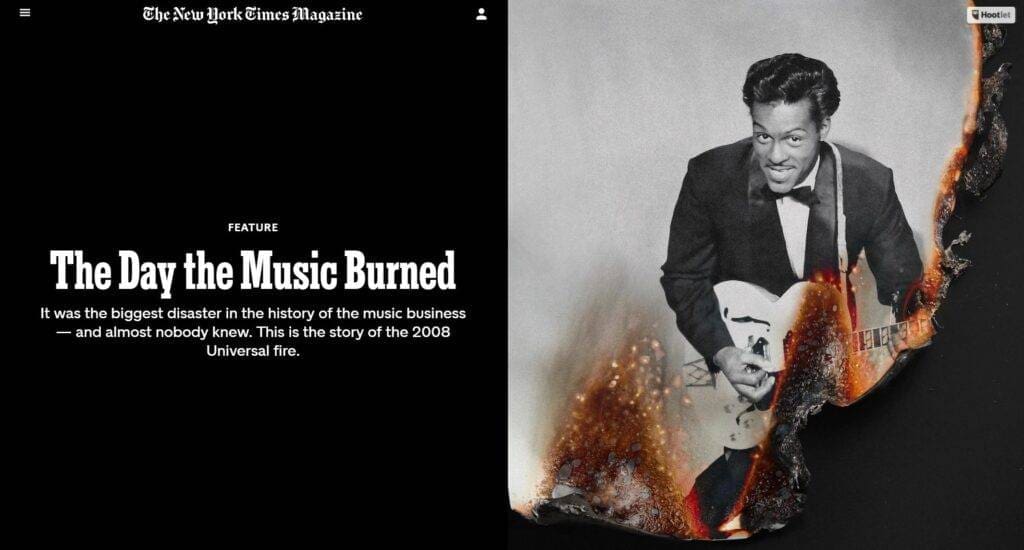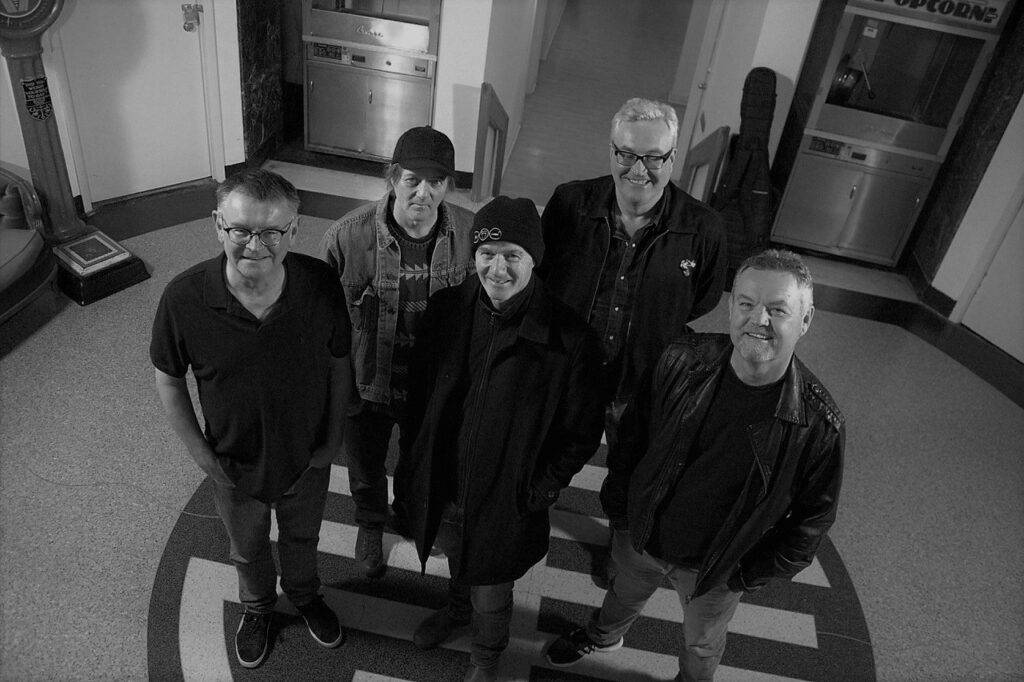I Was A Creative Force Behind One Of The Biggest Rock Bands Of The ’90s. Then I Watched Them Erase Me From Their Story


I am an artist. Not the model, not the assistant, not the ex-girlfriend, or the muse. I am an artist.
Recently, an art piece that I co-created over 30 years ago with my then-partner, musician Perry Farrell of Jane’s Addiction, was unearthed from a storage facility after being misplaced by the band’s management. A photo taken by the band’s bass player, Eric Avery, was shared across social media and music platforms, my name conspicuously absent from the tags. The photo depicts our creation in a state of decay, yet it is framed with an eerie reverence, as though it were an ancient relic.
The artwork was a mixed-media sculpture we made for the cover of Jane’s Addiction’s 1990 album, “Ritual de lo Habitual.” The life-sized papier-mâché piece depicts Perry, me, and Perry’s former partner Xiola Blue. We are three lovers entwined and mounted on plywood, with Xiola in the center. I’m on the right, wearing a black bra. The sculpture serves as a visual representation of the Jane’s Addiction song “Three Days,” and as a shrine to Xiola, who had passed away two years earlier.
Perry and I meticulously constructed the sculpture in our Venice Beach home, using chicken wire, newspaper, and a flour-water paste for the bodies, with twine for hair. Surrounding it were thrift-store finds, such as Mexican folk art pieces, candle lights, and various odd objects, including old photographs, fruit, and a radio dressed in fur. We included hidden messages. We created the work as a way to symbolize key themes in the music and help distinguish the band.
Seeing that old artwork stirred something deep within me. A tidal wave of memories came rushing in, as anger swept over my body. It was a stark reminder of the complexities of collaboration and the invisible burdens that women carry in creative partnerships with their male counterparts.


The worst part was, I felt helpless to do anything about it.
My name doesn’t get mentioned much anymore in connection to my work for Jane’s Addiction. I’ve never held ownership or rights to the art from that transformative period of my life, when my creativity flourished, producing some of my most vibrant and iconic works. While it doesn’t define me today, it remains a crucial aspect of my artistic legacy.
Thirty-three years later, creating out of love has turned out to be a lonely road to travel. When the sculpture resurfaced, no one even thought to notify me, let alone include me. Despite an influx of comments on the Instagram post asking the band to credit me, I received no response from anyone involved. Sadly, this is a recurring theme in collaborations between men and women in romantic partnerships.
This unsettling image, of a group of men peering down at my sculpted and damaged face, has served as a catalyst for reclaiming my voice and asserting my rightful place as an essential creative force behind one of the most influential rock bands of the ’80s and ’90s.
Perry and I began dating in 1983, before Jane’s Addiction existed. His wild energy inspired me, while my style and beauty drew him in. Perry was with his former band Psi Com, but his musical tastes were evolving. Drawn to artists we were listening to like Iggy Pop and T. Rex, he was eager to explore a more alternative-rock direction.
Enter Jane’s Addiction.
It began modestly. We picked the band name together. He dug my style, so he rocked my lingerie and gloves on stage. Once, before an early Jane’s show, I put on this sexy skintight black rubber dress, and he demanded to wear it.
Early on in the band’s career, before there was money and fame, we had nothing in our pockets but passion and imagination. We shared ideas, we shared food, we shared our bed, we shared our art. Together, we became a creative duo.
We played music together. I had my cherished Takamine acoustic, a gift from my father when I was 16. I taught Perry the basic chords, which he used to write most of the early Jane’s songs. We would play little duets and sing. We loved listening to music and making art together, creating fancy Christmas cards for our friends, even making and selling jewelry.
As a way for the band to gain popularity, we promoted our own live shows, renting spaces and hiring local bands to complete the lineup. At that time, in mid-’80s Los Angeles, there was nothing that compared to the excitement and energy of a live Jane’s Addiction show. If you were lucky enough to be there, you know. So it wasn’t long before the group was signed to Warner Bros. Records.


I took the early band photos for the inner sleeve of their second album, the critically acclaimed “Nothing’s Shocking” (Warner Bros., 1988), and co-created the iconic sculptures for the covers of “Nothing’s Shocking” and “Ritual de lo Habitual” (Warner Bros., 1990). Oh, and I also named both of these Grammy-nominated, platinum-selling albums.
After developing an interest in filmmaking, I attended classes at Los Angeles City College, and Perry and I directed a successful fan video called “Soul Kiss” (Warner Brothers, 1988). This strange and hilarious 20-minute VHS tape introduced the band and featured their first music video for “Mountain Song,” directed by Modi Frank ― a video that included graphic images of Perry and me nude on a bed of flowers. “Soul Kiss” went gold, and I received a gold video in the early ’90s.
I directed multiple successful projects, including the groundbreaking video for the song “Been Caught Stealing,” which won an MTV Video Music Award in 1991 and is rated #48 in VH1’s Best 100 Music Videos of all time. This video alone significantly contributed to the band’s commercial success due to its frequent radio airplay and heavy rotation on MTV.
In 1993, I wrote, directed and starred in the controversial cult film “Gift” (Warner Brothers) alongside Perry, featuring the music of Jane’s Addiction. This gothic dark comedy explored the perils of drug addiction through the story of two junkies in love. I also co-edited the film. Additionally, I directed several other music videos for the band, including for the songs “Classic Girl,” “Stop” and “Ocean Size.”
Through these various mediums, I helped shape the band’s visual and artistic identity, leading to widespread recognition and commercial success.
Not only do I make frequent appearances throughout the artwork, but I’m also portrayed in different stages of nudity. Sadly, my involvement extended to graphic documentation of my drug use, reflecting a darker aspect of that time.
Our relationship knew no bounds. We explored freely in our lifestyle, lovemaking, drug use, art and music, embodying a sense of limitless creativity that captivated others. In the ’80s and ’90s, our collaborative efforts were pivotal, with both of us playing crucial roles in bringing our imaginative ideas to life, and our shared experiences shaped the band’s creative vision.
At that time, I wasn’t thinking about fame or what the future held. We lived in the moment as equal partners, and I was happy to exist in the shadows, keeping the spotlight on Perry, whom I loved greatly and supported financially during the early part of his career. I guarantee that if I had been thinking about credit, profit, capitalism, compensation, deadlines, or what the executives were going to think, the art would have been very, very different.
By 1993, our relationship ended, and I walked away with a ferocious drug habit and the clothes on my back. I knew if I stayed, I was going to die. Desperate and homeless, I settled for a small sum of money out of court to compensate me for work I was never paid for ― money that barely lasted a year. In return, I signed away all rights to profit from the art or any future profits related to the band. At that time, the band had broken up, and I was told they would never reunite. But that’s not what happened. As the band’s success grew, I shrank into the depths of addiction.
I had given my all to Perry’s career, only to be locked out of our home and treated like the enemy. It felt like I vanished. Losing a significant relationship is one thing, but losing access to my creative home, and the comforts that go along with that, felt like a betrayal that would continue to haunt me for years to come.
So, I moved forward. I raised two beautiful children while rebuilding my life from scratch. In survival mode, I stayed clean and worked full-time to provide for us. But memories of my past made me uneasy, and I felt judged by others. With a reputation for being a drug addict, I felt like all eyes were constantly on me, scrutinizing my every move, especially with regard to my parenting. Some parents even forbade their children from visiting our home. I buried my pain to blend in, and the thought of making art felt distant and unattainable. I was broken.
As years passed, I couldn’t ignore the unsettling changes. Perry and I haven’t spoken since probably 1999. Without any direct communication, I noticed that Perry slowly stopped mentioning my name in interviews about the band’s history and the artwork. What he once referred to as “we” became “I.” I was completely wiped from the history of the band on Wikipedia. The most troubling part was the slow erosion of my artistic footprint, coupled with my complete lack of access to the very art I created.
Over the years, I found healing through self-love, self-care, prayer and meditation. By holding on to precious memories, I made peace with the fact that I was not going to be remembered as the artist behind these works. This acceptance led me to create for myself and my community, without attachment to the outcomes.
But when the photo of the sculpture resurfaced, it reminded me of the loss, like my arm had been cut off and thrown in a ditch. For years, I quietly accepted my fate, but now the anger is fueling my determination to reclaim my voice. I want my children to know I stood up for myself.
My artist’s statement has always been “I create what I see, what I feel, what I know, what I don’t know.” I need to express myself. Art was my tool for survival, for living, for breathing. I needed it to heal from my traumas, including the trauma of being a sexual abuse survivor.
I never used to mind living in the shadows of my work with Perry. It didn’t matter to me that I was a hidden figure. But now I do mind. I do care. I am still here. And I want to be seen. I don’t want to be buried alive anymore. I want to be recognized for my creativity and the work that brought so much value to Jane’s Addiction.


In recent years, I’ve been busy making art and reestablishing my artist’s statement. I run a small yet successful online jewelry business. I work as a freelance art director, creating award-winning album covers for various bands. I’ve exhibited in art shows across California, focusing on topics like the relationship between music and art and using reclaimed materials in my sculptures and photography. I also enjoy giving back to my community by teaching art at schools and workshops, sharing my experiences and inspiring others.
To me, making art is about channeling pain into beauty. So, I’ve turned my scars into a powerful story. I am proud of my journey and the strength it took to rise above the shadows and find my voice once again. I’m here to be heard, and to remind everyone that my contributions to Jane’s Addiction and the world of art will never be forgotten.






Responses